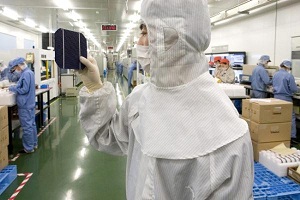Suntech's Pluto solar cell breaks efficiency records
 The Pluto cell, produced by Suntech Power Holdings, has set a new world record for efficiency.
The Pluto cell, produced by Suntech Power Holdings, has set a new world record for efficiency.
The production cell demonstrated 20.3 percent efficiency while using commercial-grade p-type silicon wafers.
This result has been confirmed by the Solar Energy Research Institute of Singapore which also tested the Pluto cell’s first generation. The first Pluto cell produced 19.6 percent efficiency, and Suntech predicted that they will reach 21 percent efficiency within six months to a year.
Suntech and the University of South Wales also hold the record for the world’s most efficient broadband nanoplasmonic solar cells.
The new technology was developed by Suntech’s research and development team in concert with the University of South Wales. The Chief Technology Officer of Suntech, Dr. Stuart Wenham, is also the Director of the School of Photovoltaic and Renewable Energy Engineering (SPREE) at the University of New South Wales.
“This technology breakthrough marks another critical milestone in our effort to improve solar cell efficiency, which will ultimately make solar competitive with fossil fuels,” he said.
Suntech is known throughout the solar industry for facilitating innovation. Fast Company, a publication focused on progressive businesses, listed Suntech as number five on their list of the 50 most innovative companies in China.
MIT’s Technology Review considers Suntech to be one of the top 50 most innovative companies in 2012.
"The successful production of Pluto solar cells and panels is the result of years of world-class research and development and is a milestone achievement for Suntech,” said Dr. Zhengrong Shi, a leading solar scientist and the CEO of Suntech. “This breakthrough technology is integral to Suntech’s strategy to drive toward grid parity and widespread global adoption of solar energy solutions. For customers, Pluto means greater efficiency and power output, equating to better utilization of space and lower installation costs."
The Pluto cell gains efficiency by combining passivated emitters with rear locally diffused (PERL) techniques along with the original design of the cell.
This changes the design of the back of the cell, making the metal/silicon boundary smaller, and minimizing the temperature used so that the standard commercial parts can be used.



